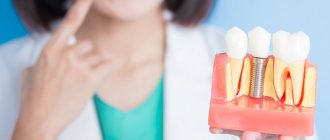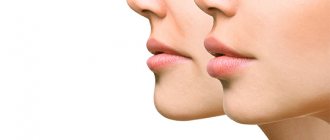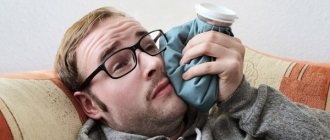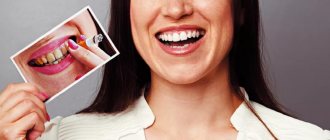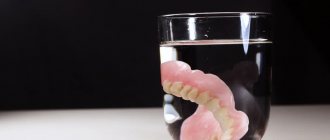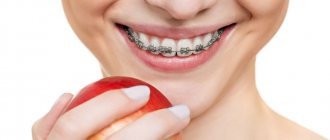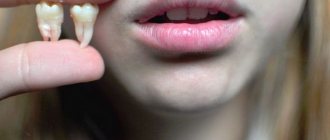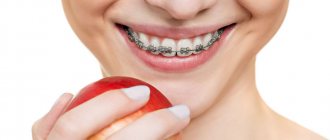How Botox works
Botox injection is an effective technique for eliminating facial wrinkles and forming a beautiful facial contour. Essentially, this is a correction without a scalpel.
Botox is a weakened, purified neurotoxic drug based on botulinum toxin. The latter is produced by the bacteria Clostridium botulinum. A powerful neuroparalytic that can relax facial muscles.
Botulinum toxin A has been used in cosmetology for more than 30 years. It is injected into the area of the facial muscle, as a result it relaxes, and the skin relief of the area is noticeably smoothed. The hydrobalance of the deep layers of the dermis is restored, the natural production of collagen and elastin is stimulated.
Botox is used to correct facial contours, smooth out wrinkles on the forehead, in the eye area and nasolabial triangle.
Why are injections given into a vein?
If medications can be taken in the form of tablets or tasty syrups, why inject them into a vein? The fact is that not all medications, when taken orally (by mouth), act effectively and quickly. After the drug is absorbed in the intestine, it does not immediately reach the desired organ. It still has to pass through the liver, where part of it will inevitably be destroyed. In addition, the medicine is forced to “take a detour” through the body, and its effects will not appear immediately.
When administered intravenously, the active substance immediately enters the general bloodstream and, bypassing the liver, reaches the desired organ. Sometimes this is of fundamental importance.
Everyone is well aware of how the procedure goes. The nurse asks the patient to place his arm on the table, palm up, and applies a tourniquet above the elbow. You may be asked to “work with your hand” - clench your hand into a fist several times. Due to this, the veins fill with blood even more, swell, and are easier to get into with a needle.
The nurse inserts the needle and pulls the syringe plunger slightly onto the neck. If blood appears in the syringe, the needle has entered a vein. The tourniquet is removed and the medicine is administered. Many drugs must be administered slowly, otherwise unpleasant symptoms may occur.
The elbow is the most common site for intravenous injections. But some people have veins in this area that are “bad” or already “punctured”, and the whole skin is bruised. In such cases, the nurse may use another vein, for example, on the back of the wrist, in the ankle area.
Exposure time
The duration of the effect of Botox depends on the individual characteristics of the body, habits, and care procedures:
- Age. Typically, botulinum therapy is indicated for people over 45 years of age, but often younger people also need correction. The breakdown of drug substances in a young body occurs faster, so the duration of the effect is reduced.
- Behavior. Poor nutrition, lack of sleep, stress and negative habits affect not only your well-being, but also your appearance - they worsen the effect of injections.
- Quality of the drug. The drug must be original and stored correctly.
How does mesotherapy work?
The active ingredients can be different: from vascular protectors and other registered drugs to vitamins, microelements, lipolytics and plant extracts, for example, artichoke extract. Often hyaluronic acid is also present in cosmetic meso-cocktails, but this is not a necessary component.
Hence the various effects and wide scope of application. Each component of the solution has a different effect on skin tissue. For example, during lipotherapy, lipolytics destroy the membrane of fat cells, accelerate lipolysis - the breakdown of fats - and even out the structure of the skin through collagen synthesis.
Signs of Botox working
It is easy to feel the effect of botulinum toxin after the procedure: the facial muscles at the injection site stop working almost immediately, although a trace of the wrinkle will still be visible. For example, it will not be possible to frown your forehead, and, therefore, folds on the skin will not be able to form.
On days 5-7, the distribution of the drug ends, the effect becomes maximum: the skin is noticeably fresher, acquires a healthy shine and tint, and cosmetics fit perfectly on it. Even deep wrinkles are gradually smoothed out.
When administered correctly, Botox injections do not turn the face into a “mask.” There will still be facial expressions and emotions. To get truly excellent results, contact beauty centers - cosmetologists with extensive experience work there.
Botulinum toxin: what is it and how does it help in the fight against wrinkles?
The effect of Botox is achieved due to the neurotoxin botulism type A. It is one of the most dangerous poisons in the world, but in cosmetology such microscopic doses of the substance are used that it is not at all difficult for a professional to control its effect and get a positive result.
Naturally, botulinum toxin is not used in cosmetology in its pure form. It is first stabilized and purified from protein impurities in the laboratory.
The effect of Botox is as follows: with an injection, it enters the muscle, blocking the transmission of nerve impulses in it. As a result, the muscle relaxes, its contraction stops, and as a result, the skin adjacent to it becomes smooth.
Repeated procedures
After Botox is removed, you can repeat the course to get the results back. Wait until your facial muscles have fully recovered to get the best results.
If Botox was administered for the first time, a corrective session is usually carried out after 8 months. All subsequent injections are performed at intervals of 4-6 months. With this technique you can maintain consistently good results.
If procedures are performed too often, the sensitivity of the dermis and nerve structures increases significantly. Botox dissolves faster each time, correction is required more often.
Is it possible to extend the result?
Follow all the cosmetologist's recommendations to get the maximum, safe and prolonged effect of the procedure.
We will consider the main recommendations below:
- Physical activity in the first 7-10 days after the session significantly reduces the effect of botulinum therapy.
- There are no additional jokes between the main courses! They will provoke the production of antibodies, which destroy the toxin and reduce its effect to a minimum.
- Avoid solariums, baths and saunas.
- Assess the compatibility of current pharmacotherapy with contraindications to botulinum therapy.
Choice of pain medications
For chronic types of pain, the physician must first determine the underlying causes and nature of the pain (whether the pain is referred, neuropathic, or central). Only after this can he prescribe a suitable course of treatment with an anesthetic drug.
In case of acute pain, the doctor must determine the possible risk of side effects on the gastrointestinal tract and cardiovascular system. If there is no dyspepsia, then any non-steroidal anti-inflammatory drugs are allowed to be used, but if there is, you should take Ibuprofen. You can also take Diclofenac, Naproxen, Nimesulide or Meloxicam as an alternative.
If you have heart problems, the patient should stop taking non-steroidal anti-inflammatory drugs and turn their attention to opioid drugs, as well as paracetamol. If the risk is moderate, then the patient is prescribed Nimesulide, but on the condition that blood pressure is at the normal level or can be brought to this level or any other drug to lower blood pressure.
Choosing pain medications is a complex procedure because there are so many factors to consider
If there is a high probability of bleeding in the gastrointestinal tract, the patient should take non-steroidal anti-inflammatory drugs together with proton pump inhibitors. Such inhibitors primarily include Omeprazole. It's all about the risk of bleeding when taking NSAIDs. In order to reduce or prevent it, their use is allowed only in combination with proton pump inhibitors.
If there is a high probability of simultaneous occurrence of complications associated with the cardiovascular system and the gastrointestinal tract, the patient is required to take Nimesulide together with acetylsalicylic acid and the proton pump inhibitor Omeprazole.
If the pain subsides within a week, then treatment should be continued until the discomfort is completely relieved. When this does not happen, the patient should use muscle relaxants and local anesthetics.
The administration of corticosteroids (hormonal drugs) is allowed only if it is confirmed that the patient does not have any signs of developing tuberculosis of the joints or spine.
Note! If the patient has very severe pain, but the drugs have no effect, then the problem is in the nature of the disease. In such a situation, as a rule, there is a high probability of a non-infectious nature of the pain.
Lifestyle after the procedure
The strictest recommendations for the first 3 days after the session:
- Avoid alcoholic drinks: ethyl alcohol increases blood flow to the face.
- Do not take hot baths or go to the sauna.
- Avoid visiting the beach and solarium.
- Protect your face from direct sunlight.
- Avoid even minimal physical activity.
- Do not take muscle relaxants, tetracycline antibiotics, or B vitamins.
- Do not massage the injection area.
WHAT ARE BEAUTY INJECTIONS FOR, HOW THEY WORK AND WHEN TO USE THEM
Injection cosmetology (popularly “beauty injections”) is a branch of aesthetic medicine and an integral part of modern methods of rejuvenation and prevention of aging.
The use of injection techniques is aimed at solving a variety of problems: smoothing wrinkles and folds, replenishing missing volumes and providing a lifting effect, correcting facial asymmetry, improving the quality and color of the skin, reducing pigmentation, pathological vascular network and the severity of acne, restoring the water-lipid mantle of the skin.
Of course, it is very difficult to understand the indications for injection procedures and at what age to carry them out, especially if you are still very young and it seems that it is too early to resort to such serious procedures. It is important to note that injections, like any cosmetic procedures in principle, should not be done in accordance with any age categories, but solely according to indications!
In the case of injection techniques, everything is too individual!!!
Undesirable effects
It is impossible to predict in advance how the substance will be distributed, how muscle fibers will react to the effects of botulinum toxin.
Typical side effects are redness of the facial skin, the appearance of papules, pain, and swelling.
Rare complications and their causes:
- Strong relaxation of the frontal muscles gives the effect of lowered eyebrows.
- Excessive botulinum toxin injections can lead to eyelid spasm.
- Excessive physical activity and ignoring recommendations are a common cause of asymmetry, bruising, and articulation disorders.
- Individual reaction: headaches, lumps and papules at injection points, increased intraocular pressure.
When to start biorevitalization procedures
Injections of biorevitalizants are used for visible rejuvenation of the skin of the face, neck and décolleté, hands and any other parts of the body that the patient wants to “revive”.
This is one of the most effective methods for preventing photoaging and restoring the hydrolipid mantle of the skin after exposure to the sun or after a frosty winter, etc.
The very first manifestation of age-related changes is the loss of moisture in the skin. This process is associated both with the failure of protective barriers and with a physiological age-related decrease in the synthesis of hyaluronic acid. In the first stages, we can only cope with external means, depending on our genetic characteristics, but only up to the age of 30. Then, starting at the age of 35, the moment comes when we need to start “preventing” aging. Yes, that’s right: by starting to work with the skin on time and regularly – by “biorevitalizing” it at least 2 times a year – you can significantly slow down all age-related changes .
